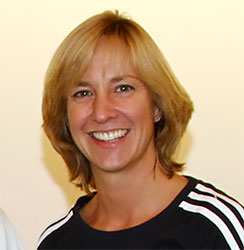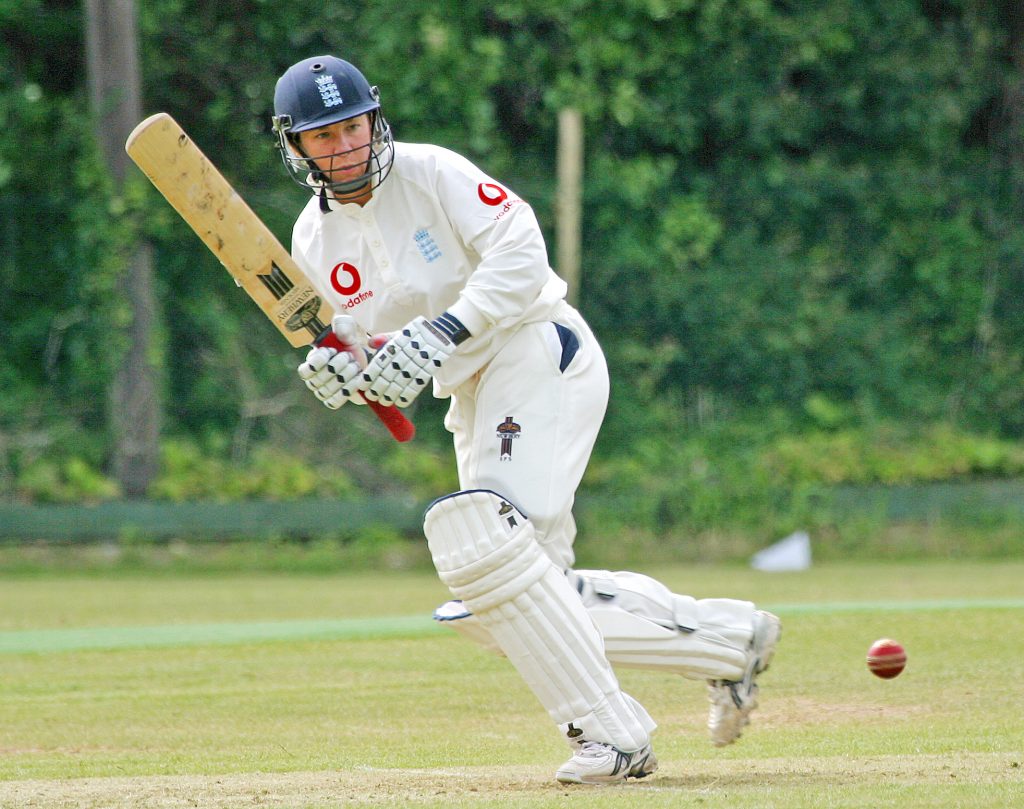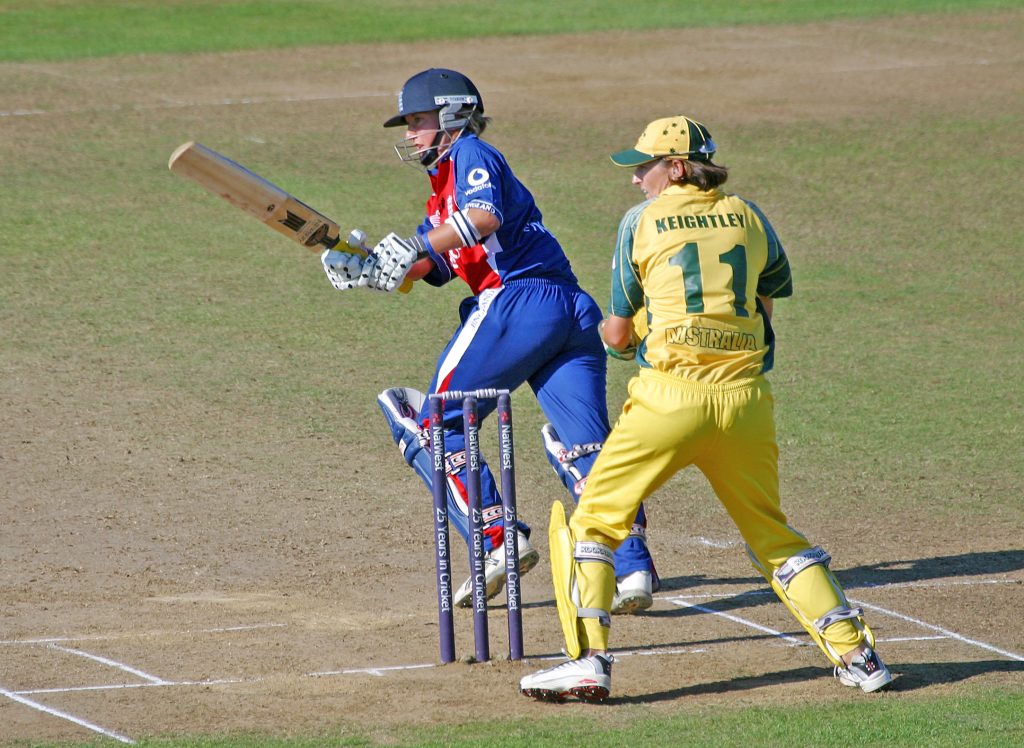MCC President
Clare Connor has done more than anyone else to develop women’s cricket and make the women’s game professional. During her time as captain of Sussex and England and then as Director of English women’s cricket, Clare worked to improve the standard of the women’s game on the field and the professionalism of the team both on and off the field. On 24 June 2020 it was announced that Clare had been invited to become the next President of the MCC, the first female president in the MCC’s 233-year history, a post she will take up on 1 October 2021.
Clare was born in Brighton on 1 September 1976, and it wasn’t too long before she had developed a love for the game of cricket, visiting Lord’s for the first time when she was nine.. Clare’s route into the women’s game was through boys’ school cricket for she first started playing cricket seriously whilst at Brighton College. By the age of 16 Clare was playing for the U16 side of a local team that played at Fulking, Preston Nomads as well as for Sussex women.

An England call-up at 18
Clare had developed into a good all-rounder, as a right-hand bat and bowling left-arm spin. Clare earned a call-up to the England one-day side to play Denmark on 19 July 1995 whilst still a teenager and was selected for the tour of India that winter. She had to pay £500 towards her blazer and travel costs, a far cry from professionalism. As she later said, ‘‘No getting prepared as a team, talking about strategy, roles, goalsetting, scenarios.’’ It was on this tour that Clare made her Test debut against India on 10 December.
Clare was having to juggle a busy cricket schedule with her university studies for she had already started her English course at Manchester University, where she would be until 1998.
Within three years of making her debut for England, Clare was made vice-captain of England and captain of Sussex. Then, she stepped up, aged just 23, to become captain of England during the disastrous tour of Australia and New Zealand in the winter of 1999-2000. The team had been hammered in Australia, the first part of the tour, and team spirit was poor. The team had not won in a while and there was a blame culture within a team that had a lot of senior players; it was not an easy time for her or the team. The team then lost all the remaining games against New Zealand, however, with support from coach John Harmer and his successor Richard Bates, Clare gradually restored the confidence of the players over the next few years and success came for both England and Sussex.
Defeating the South Africans
In 2002 Clare was Vodafone’s Player of the Year, and then in 2003, under Clare’s captaincy, the national side took a huge stride forward with victory over the South African tourists by an innings and 96 runs in a Test match, the highest recorded win by England women since 1934. The team played mainly one-day games with few Test matches, making this result particularly welcome. Test matches were four-day games played at either Shenley or Taunton, both grounds known for their batting pitches with high scores and therefore few results. The team knew that in the one-day games against South Africa they had to post scores of more than 250 to stand any chance of getting close to beating Australia in the future, and it was to Clare’s credit that the team had the confidence to do just that.
Sussex win County Title
Clare’s county team, Sussex, won the county title for the first time making 2003 a very special year, as the Sussex men, under Chris Adams, won the county title for the first time.
In 2004 England faced and beat New Zealand, for the first time in twelve years. Sussex retained their county title being undefeated in their five matches at Cambridge. In the final, Sussex beat Yorkshire by eight wickets. Clare was also awarded an MBE in the Queen’s Birthday Honours for ‘services to women’s cricket’. That winter, Clare led the England side in the World Cup held in South Africa. There was disappointment though, for England lost to Australia at the semi-final stage. The opportunity for revenge came during Australia’s tour of England in 2005. Clare had been an England player for ten years and had never been on the winning side against Australia. The team was very young, and inexperienced, but Clare led the side to a 1-0 series win, one of her greatest moments in the game.

Beating New Zealand and then Australia
In 2004 England faced and beat New Zealand, for the first time in twelve years. Sussex retained their county title being undefeated in their five matches at Cambridge. In the final, Sussex beat Yorkshire by eight wickets. Clare was also awarded an MBE in the Queen’s Birthday Honours for ‘services to women’s cricket’.
That winter, Clare led the England side in the World Cup held in South Africa. There was disappointment though, for England lost to Australia at the semi-final stage. The opportunity for revenge came during Australia’s tour of England in 2005. Clare had been an England player for ten years and had never been on the winning side against Australia. The team was very young, and inexperienced, but Clare led the side to a 1-0 series win, one of her greatest moments in the game. One of the match winners that summer was Holly Colvin, who, as a 15 year old schoolgirl about to go on a geography field trip, was brought into the side. Clare brought Holly to Hove where the team was preparing because Australia had a good orthodox spinner. Holly got everyone out in the nets and on that basis was picked for the first Test match the following day. Holly took three wickets as the Australians made 355. In England’s reply, Clare made 41 and then took four for 68 as the Australians were restricted to 223 in their second innings. The game petered out into a draw. The second Test was played at Worcester with Australia scoring just 131 in their first innings. In reply England made 289 with Clare contributing 37. With Australia scoring a moderate 232 in their second innings, England needed just 75 for an historic victory which was achieved for the loss of four wickets. This was to be Clare’s last Test match as she did not go on the winter tour. The one-day series against Australia was Clare’s last, and although Australia won the series 3:2, Clare took eight wickets, the most from an England player.

Retirement
Clare was forced to miss the winter tour to India because of ankle and elbow injuries and announced her retirement from cricket in March 2006. She was to concentrate more on her teaching career at Brighton College, where she taught English and was Head of the Marketing and PR Department. She had fulfilled her dream of playing for her country, leading the team, and winning the Ashes. In her time as England captain Clare had given the players belief in their abilities,, and that they were capable of beating the best in the world. The team had developed a much more professional outlook. There was Vodafone sponsorship and lottery funding, together with training camps and access to specialists, and one-to-one coaches.
Publicity of the team had increased, and whereas Rachel Heyhoe-Flint had been dropped for being too famous, Clare had become a figurehead and a positive image for the women’s game. Winning the Ashes in 2005 and rising in the world ranking from five to two had given the team a high profile. She was rewarded for the Ashes victory by being awarded an OBE in the 2006 New Year Honours. She was later promoted to CBE in the Queen’s 2018 Honours, following the success of the women in winning the 2017 World Cup.
Clare was a central part of this improvement in England’s fortunes. She was articulate and able to deal with the media. Although her batting and bowling figures were moderate, she was tactically very astute and an excellent motivator of her team. Her brain made up for any lack of runs. She averaged 16.46 in one-day games and 20.07 in Tests, and her bowling economy was 3.48 in one-day games and her average in Test matches was 27.91.
Clare did not retire from playing cricket completely for she continued to play for the celebrity side Lashings, the first woman to do so.
All images courtesy of Don Miles, http://www.womenscricket.net